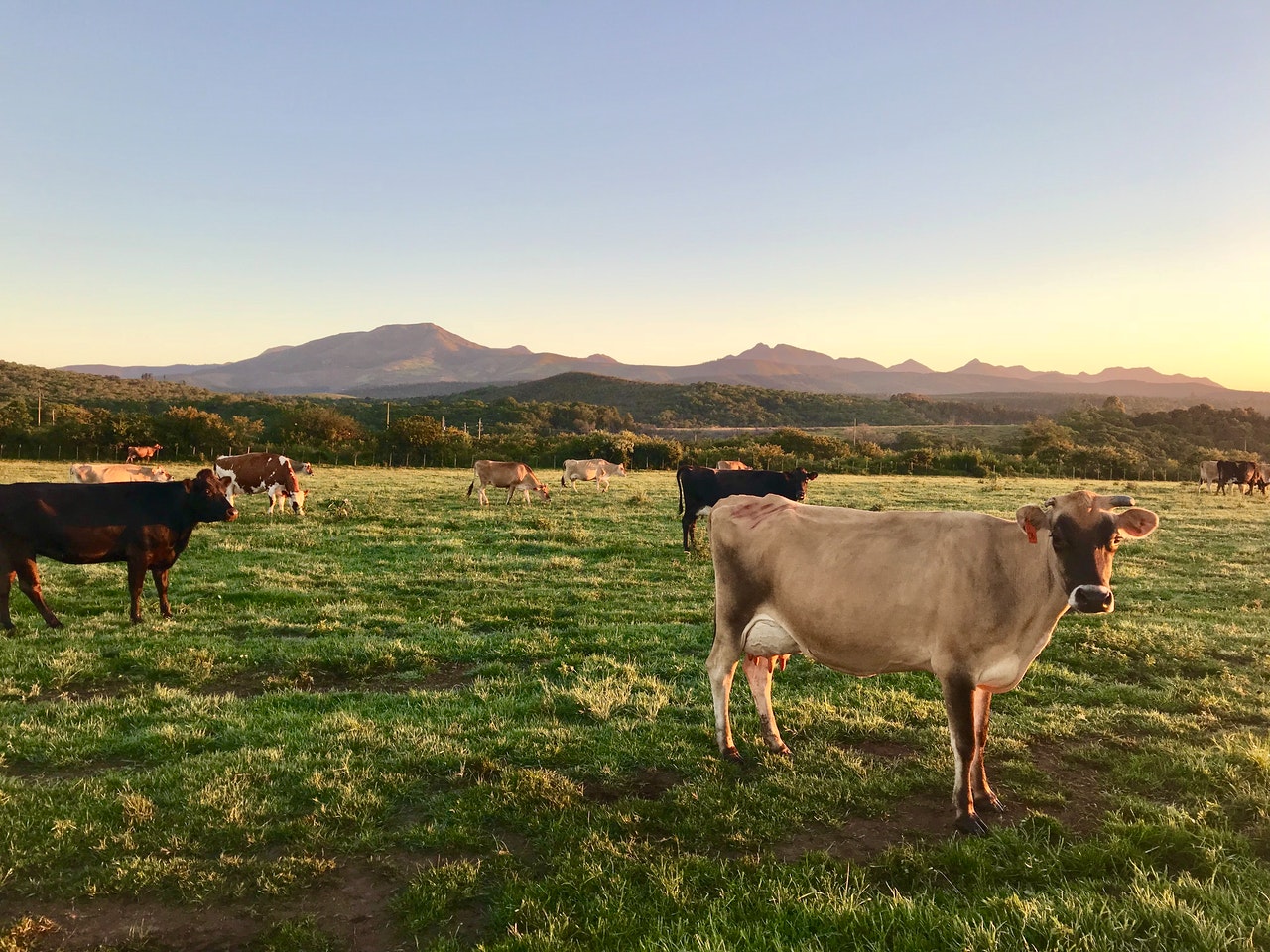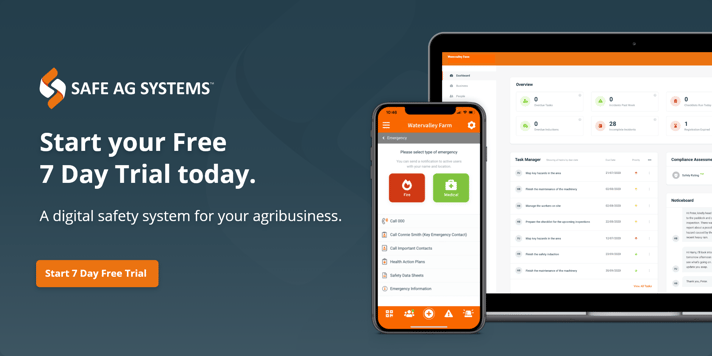When it comes to making decisions about your farm, ranch or agribusiness, Data is king. Are you evaluating your data to make better informed decisions when it comes to health and safety? Are you using your data to uncover new insights to drive cultural change?
How can you improve if you don’t have a benchmark to start with? More importantly, how do you know what safety metrics you should be tracking? Measuring the performance of your health and safety program or safety management system tells you how effective it is, that your safety software is performing as it should, as well as guiding improvements and identifying gaps in your current safety initiatives – how do you fix something if you don’t know there is a problem, until it’s too late?
What are Safety Metrics?
Safety metrics are tools that offer your team insight into the effectiveness of your health and safety processes and activities. They can shed some light on gaps in your safety program to improve initiatives and actions moving forward.
In any other job or workplace, you will often find KPIs or key performance indicators. KPIs are described as measurable values that you can track to determine the progress on specific business objectives. In health and safety, some countries will refer to safety metrics as lagging or leading indicators, Safe Work Australia utilise the term Positive Performance Indicators (PPIs).
“PPIs provide important data for informing work health and safety performance improvement, monitoring the effectiveness of work health and safety system inputs and processes and highlighting where prioritised efforts or increased resources are likely to add future value.”
Lagging indicators are a high-level benchmark, defined as safety metrics that quantify data from events that have already taken places. Often described as reactive, lagging indicators normally focus on incident rates, time lost due to injury or worker compensation claims.
Utilising lagging indicators alone is limiting as they fail to identify the cause of the event. Due to their reactive nature, lagging indicators provide your team with data and insights after it may be too late. Most health and safety professionals will recommend that you use lagging indicators in conjunction with leading indicators for a complete performance overview of your workplace safety program.
Leading indicators are generally proactive approaches that measure events in the lead up to an injury, illness or incident. Leading indicators can be noted prior to an event or injury, a preventative measure, controls, or corrective actions. Leading indicators on your farm would be the number of completed pre-operational safety checklists or completed safety inspections.
Often the cost associated with the collection of leading indicators may be deemed too high or time-consuming for some agribusinesses. The good news is there are a number of advantages to tracking your safety metrics. If you utilise Safe Ag Systems as of your safety management software, you may already be tracking some lagging and leading indicators without any extra work. Your relevant data is being tracked and recorded each time your workers access the software.

How does Safe Ag Systems help you track Lagging and Leading Indicators?
To know where to start tracking, you first need to think about the outcome you are trying to achieve. We have created a short list to help get you started:
Near Miss and Incidents
Most Health and Safety efforts are focussed on near misses and incidents, these are clearly lagging indicators. This safety metric provides a baseline for your agribusiness to distinguish what is working and what isn’t. Your team should be reviewing the number of incident reports and determining any commonalities or trends amongst the data. What controls do you currently have established and what could you implement to improve this key safety metric in the future?
Did you know with Safe Ag Systems near miss and incident reporting can be quickly kicked off straight from the field, ensuring key details are captured and reported. If your team are unsure of the correct steps in the event of a near miss or incident, Safe Ag Systems intuitive Near Miss and Incident reporting makes capturing the right information in an investigation easier and quicker.
Worker Training and Participation
Another crucial workplace safety metric for your agribusiness, is tracking and monitoring the validity of your workers current training certificates, qualifications, tickets and licenses, what will expire soon and who requires further training to support your workplace compliance. This record keeping doesn’t just stop at certificates, it also includes completed inductions, policies, and procedures.
No matter whether you have a visitor, contractor or worker coming onto your property, Safe Ag Systems allows you to send them an induction before they arrive or simply initiate a visitor induction on the mobile app. With access to the Safe Ag Systems training register, you can manage tickets, licenses, certificates and training. Set expiry dates to receive reminders and know who the right person for the job is.
Worker participation may include the number of training courses they have finished, or the number of inspections and safety checklists performed and submitted. Everyone on your farm has a duty for the health and safety of those around them, these indicators assist with reducing the risks within your workplace.
Corrective actions
As part of safety management, you will be assigning corrective actions to drive improvements. To develop this safety metric, your team should be reviewing the number of corrective actions being completed each month in comparison to corrective actions that are assigned, but not completed. Monitor the number of actions that are a direct result of an incident on farm as well as the time frame your team are currently taking to complete the associated actions. Make use of this data to encourage your workers to focus on completing corrective actions as quickly and as safely as possible.
With Safe Ag Systems, tasks and corrective actions can be assigned and tracked instantly. Stay on top of scheduled maintenance as well as follow up tasks relating to near miss and incident reports and safety inspections. Use the Task Manager to follow up on safety hazards that have been identified, allowing you to fix or communicate the issue quickly.
Once you have selected which metrics you would like to track, it is important to set SMART goals. Goals should be Specific, Measurable, Attainable, Reasonable, and Timely.

Safe Ag Systems Safety Rating
Did you know Safe Ag Systems safety management software provides our own safety rating within the software to provide you with a overview based on your actions. Our Safety Rating considers the usage of your system and provides you with a guide on what you can do to improve your safety practices and record keeping.
Your Safety Rating provides you with a snapshot of the health of your safety system and is calculated based on activity and actions taken within the program. It provides you with access to a full breakdown of your rating, so you can easily identify the areas that need some extra attention. Track the health of your safety system to help negotiate an insurance discount with your supplier.
Topics: Safety Management System
Disclaimer: Content on this website may be of relevance to users outside of Australia, but content links and examples are specific to Australia. Please check with your local authority for your country and industry requirements.











